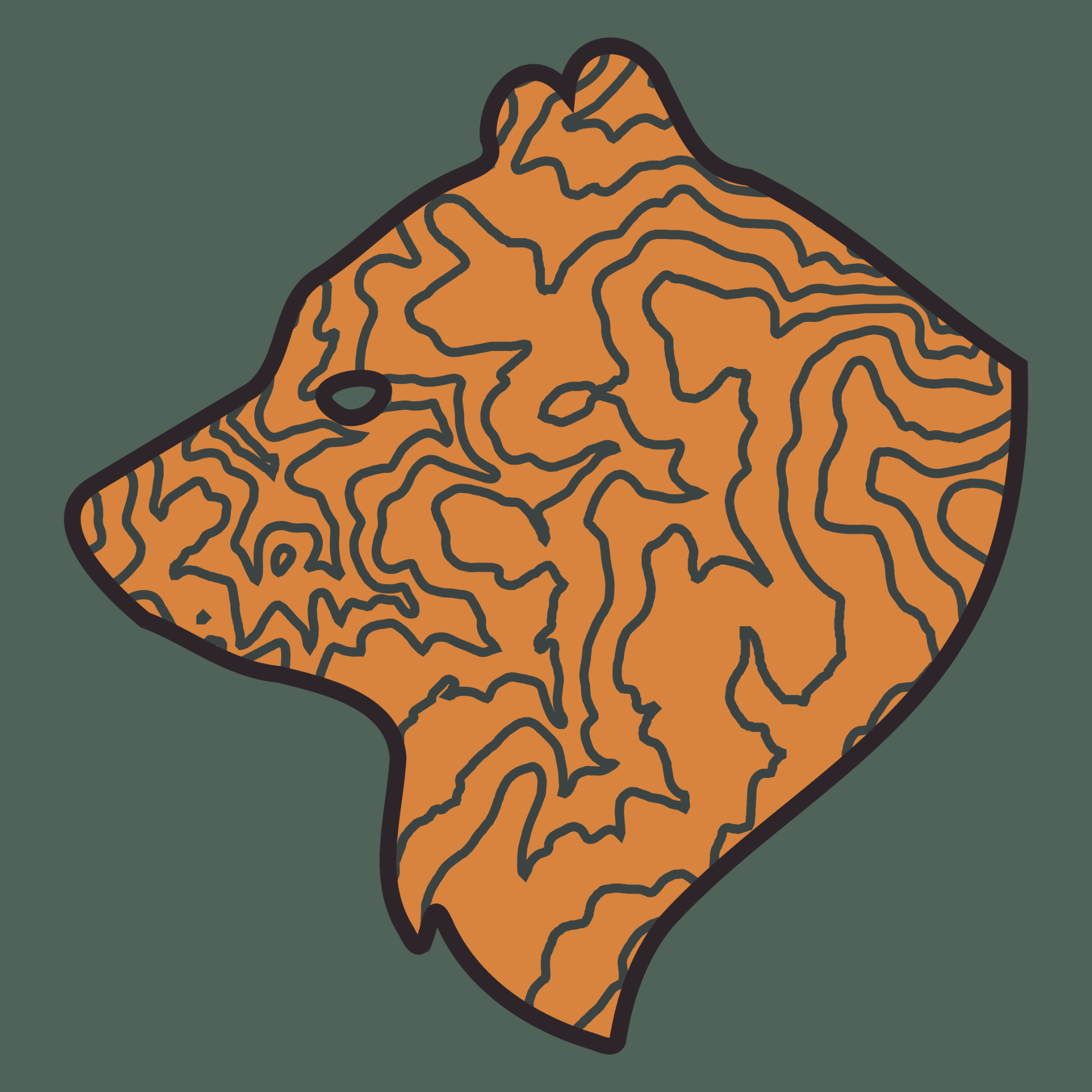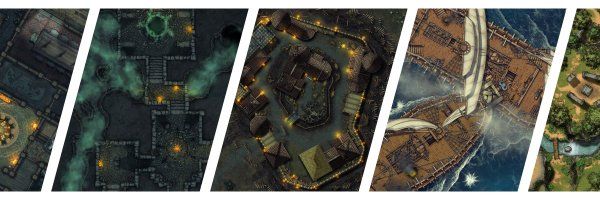Greetings Forge community, and welcome to the seventeenth edition of our Stars of the VTT Galaxy series. This regular interview series is meant to shine a light on the already bright stars that make up our community of Bazaar Creators.
Their maps are brimming with details and built for tactical gameplay, perfect for whatever weird locale you throw your players into. We are honored to introduce you to Nate, the artist behind Bearworks and a mapmaker who seeks to tell a story and build a world with their maps.
Our sky consists of many stars. Each of them illuminating our planet. As you can guess, the stars are you. Yes, it's you, the great content creators who, in your own unique way, shine on our worlds. Thank you for being part of our heavenly sky and weaving the fabric of our Community.
Let's meet today's star.
Introduce yourself. For those who don’t know what you do, what would you describe yourself as doing for a living?
Nate: Hello! My name is Nate. I'm the purveyor of content at Bearworks. I mainly focus on creating TTRPG battlemaps. And while I don't do this for a living, the amount of time I put into this project seems to grow by the day!
My goal is to provide functional tools that can be used for tactical play as well as to inspire stories.
What’s one random fact about you?
Nate: At one time, I could call myself a professional beer scientist and spent my working hours experimenting with, running tests on, and most importantly tasting delicious beverages. It was a really fun job that allowed me to always be at the boundary of technical work and creative expression, which I absolutely love.
How did you get started creating TTRPG content?
Nate: I have always been a fan of the beauty of old maps. How they both provide tangible utility, but also never lack details that were meant to inspire the observer to explore and wonder.
When I first got into TTRPGs, I immediately started creating maps, whether global, regional, or battlemaps for encounters, even though I was just a fledgling player. What started as designing my party's hideout turned into battle areas and social encounter backdrops, and then ultimately exploded once I started GMing myself.
One thing quickly led to another and my players pushed me to try tossing my hat in the ring and create professionally. I started by just distributing the content I was already creating for my own games, but I found a liking for designing things for other GM's tables and games. The collaborative aspect of the TTRPG space really solidified my love of the hobby, and there was no looking back from there.
I still feel like I am getting started, and have so much more to learn and explore before I even hit my steady state. I’m excited to see what is still to come!
How did you translate from that enthusiasm and your player's encouragement into something being done semi-professionally now? What does the climb from early Bearworks to the successful Patreon look like?
Nate: Early on, it wasn't commercial. I would post maps mostly to Reddit and try to get feedback and a sense of where I was falling among the current offering of content. So firstly, getting feedback from others that were not my friends and family. And secondly, figuring out how things worked in the market. Where things were sold, or posted, how to advertise, what was expected from the community or even the other creators.
Once all the ducks were in a row, I just went in feet first. Posted a bunch of free content, mostly free packs that illustrated what a patron would be getting from me, and screamed about it from the rooftops.
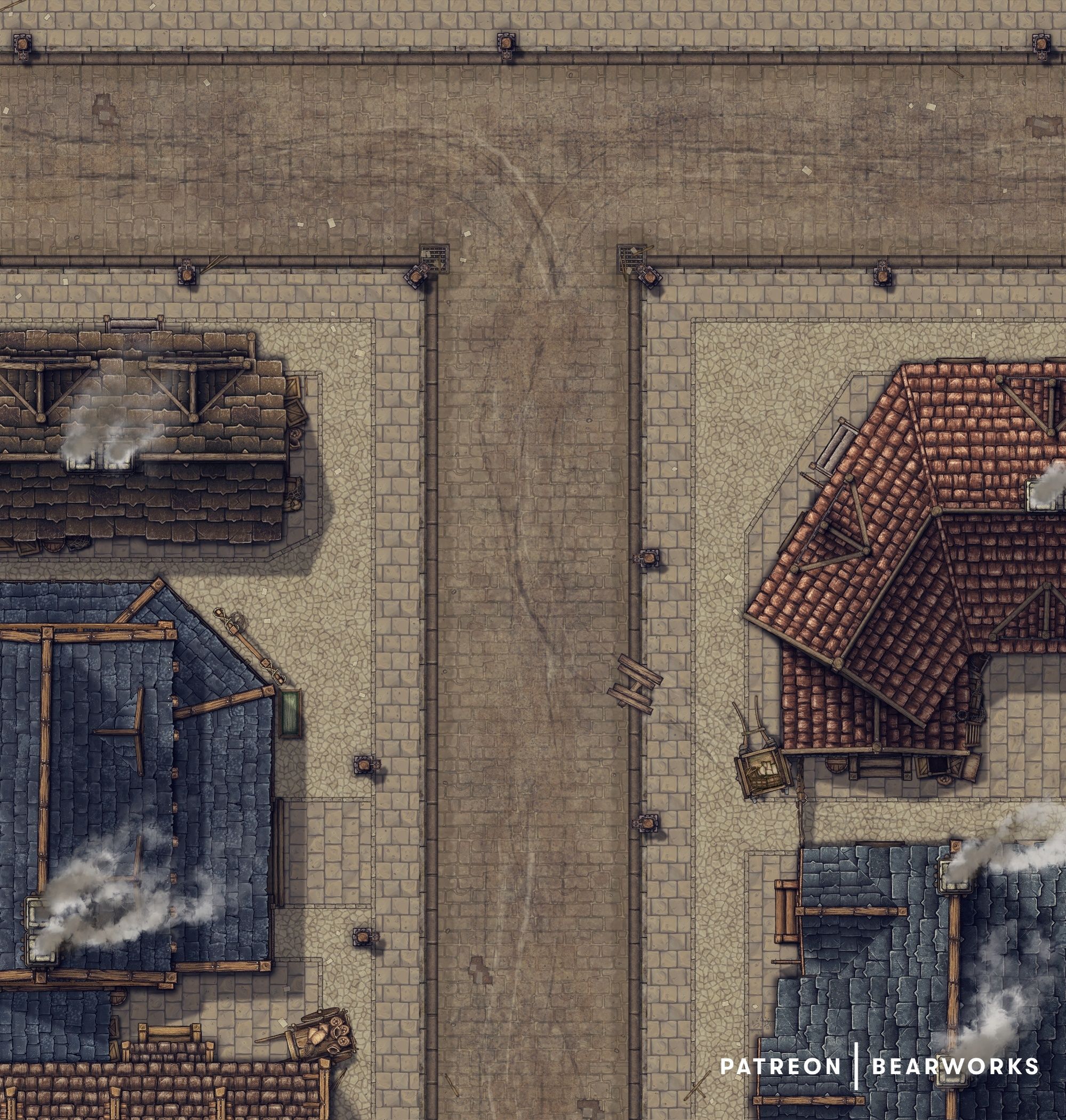
After that, it's just been a journey of continuous learning. Taking advice and feedback offered from others and applying it wherever I could. Lots and lots of YouTube viewing and reading about how to connect with an audience, and produce content that they will want and support my making. It's a very iterative process that is self-exploratory because it has to depend on you. If I didn't like what I was doing, I would have failed. So a nice balance of what I wanted to make and what others wanted me to make.
I still think that's true to this day.
You put quite a bit of creative effort into doing this work, then! Do you ever have difficulties preparing content for your games after spending your day making RPG content? We know it can be hard to do something that's kind of work-adjacent like that.
Nate: There is only so much creative juice to go around, so yes, there are days.
What I have found to work is to focus on things that I am enjoying doing at the moment.
Some days, I don't map. I plan a session for my table instead, do admin work, schedule social media, update Foundry VTT modules or storefront listings, write map descriptions, review revenue and costs, and even lately, I have been working on writing Python scripts to help streamline my process on the backend. If I find myself preferring one task, I will allow myself to focus on that for now.
There are times I have to sit myself down and have a talking to about needing to work on something specific but the more grace I give myself, the more productive I am, and the higher the quality of content produced.
So you touched earlier on trying to make maps that inspire stories and provide tactical play. Can you, please, explain a little bit about what you try to do to make sure these maps can be used for tactical gameplay?
Nate: I am very much a "legalistic nerd," or that's my group's term for it at least. I am very rules-oriented and I love learning to bend, manipulate, and use them to play games in fun ways. This is how I ended up as our forever GM.
So when I am building maps more and more, I am approaching it from a perspective of how could players and GMs utilize small details within the space to engage more with the game and not simply take swings at each other while standing in place. Elevation is a great example that is relatively simple.
I recently put out a Desert Alley map that I decided should have 2 or 3 elevations for people to play at. Adding stairs in places that lead to balconies, ladders to rooftops, rooftop bridges, and gaps, all spanning an alley below. When you add something like Foundry VTT on top of that with addons like Levels, you can go even further. Multi-level buildings that players can enter and leave at different heights, taking cover in unique and fun places, or flanking from above.
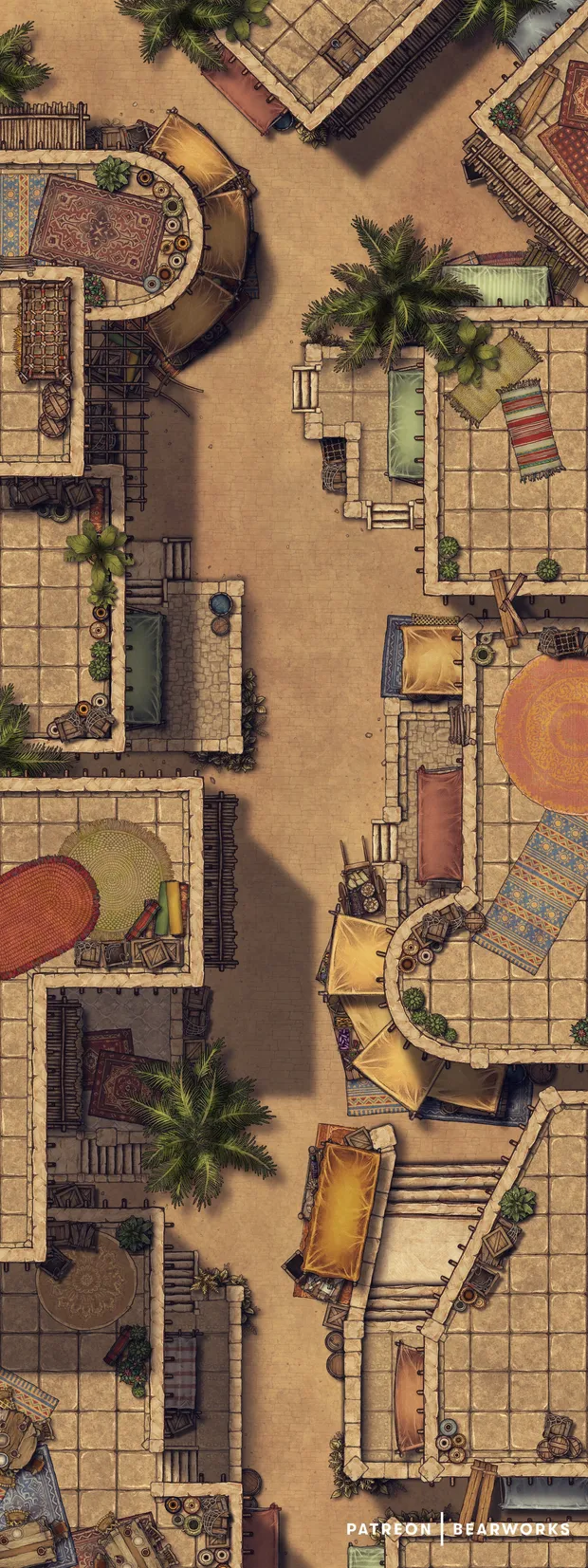
On your website, you mention drawing inspiration from darker, grittier fantasy. Where does this inspiration come from in the work you do? Or perhaps, your “muse”?
Nate: I have always found stories that are more grounded in lower fantasy, where stakes are high, life cheaper, and less clear distinction between good and bad to be more interesting. Stories from all media types like The Witcher, The First Law Trilogy, Bioshock, and The Long Dark, to name a few.
I think this comes out in my games and stories very obviously, but in my maps, it's more in the finer details. I tend to use muted tones and only push vibrant colors when I really need to make a point, like a fungal infection of the sewers underneath the city that threatens life above in my Mycobloom map.
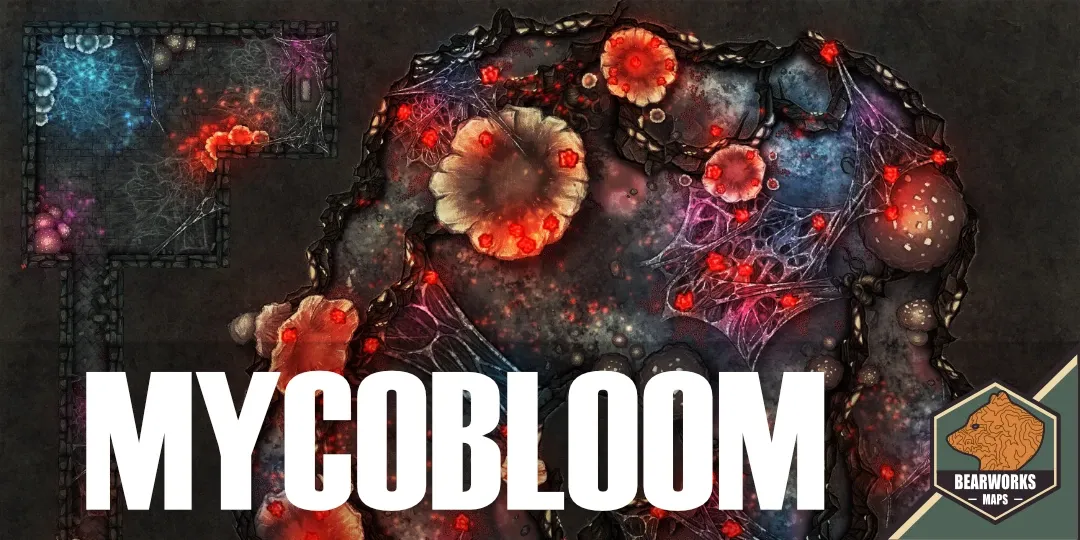
Or the Hellish, Celestial, and Astral portal map pack that leads to otherworldly locations. I also always like to feel like maps are lived in by people in these types of stories. So I include small world-building details that give some inspiration to the people who live, work, or die there.

Do your Patreon subscribers give feedback/help with the creative process, or do you largely operate without their feedback?
Nate: I try to solicit feedback and input from patrons where I can. I have a board on my Discord for people to give me suggestions and ideas, those go directly into my notes, and while not acted on immediately, they often come back up later. I also try to post in-progress work when I can and always want to hear their thoughts. I have an open-door policy for ideas, feedback, and critique.
I am a huge fan of collaborative creation, working with others to bring an encounter/scene to life is so fulfilling. Bouncing back and forth with ideas and building off one another. You always come away with ideas you wouldn't have generated on your own. I end up working mostly on my own but try to jump on any opportunity to work with others and get their ideas on how to improve.
What is your favorite map or project?
Nate: My favorite map from a visual standpoint is my Jungle Cenote map. I absolutely love how it turned out. It's outside my normal muted tones, and popped with vibrancy.
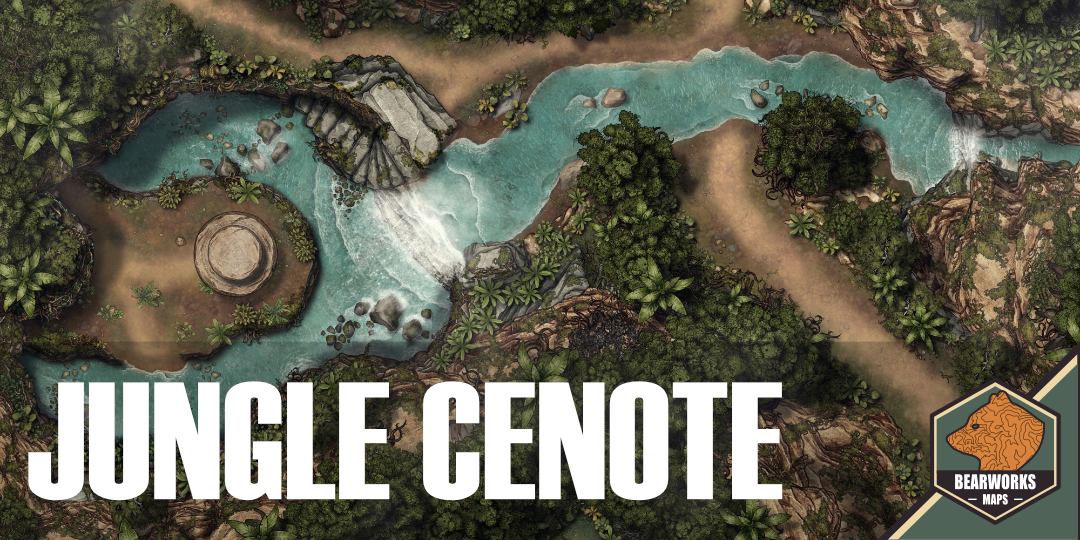
And what's your least favorite piece of content you've created? (If it exists).😊
Nate: Both questions are hard because it is like being asked to pick between children.😝
I don't think there is a least favorite, but I'd rather not spend too much time thinking about some of the mistakes I made on early maps...
The spicy question- what is your favorite VTT to run on? What kind of improvements do you want to see in it?
Nate: In all honestly, I spend the most amount of time in Foundry VTT creating modules, learning the systems and add-ons, and trying to improve but I don't ever get to use it! I still need to find a way to get my group on board with it, but as I transition more to in-person play it's becoming ever more unlikely. But I'm always looking for the in.
For improvements, I would love to see quality of life changes and expansions to the fog of war and line of sight features. Going back to my legalistic nerd comment, I really wish we had more tools for even more tactical combat across elevations and building floors. I find myself running into limitations and actually having to bend maps to match the systems instead of what I think would be more fun.
What is your opinion on AI, especially in the TTRPG space?
Nate: It's a divisive topic, that is for sure. There is a main divider for me: commercial and non-commercial.
As a creator, it is hard to see 1000+ map packs being sold for $10 as it is not something I can compete with on any reasonable scale, and becomes disheartening. I have looked through many, and while the technology has improved, they still lack substance. Most of them are mostly nonsense that under any real scrutiny fall apart.
Then, there is the whole undecided legal aspect that I am nowhere near qualified to speak on in public.
But overall, commercially, I am not a fan. For personal use, go for it. Technology is helpful in so many ways which isn't art and creative expression. It will improve our lives, but it really should be treated as a tool and not an end-all solution to side-stepping creativity and deep thought.
What are your goals moving forward with your content?
Nate: My main goal right now is to keep building my core while slowly pushing into new things. There is still a lot I have to learn about battlemaps and map making, not to mention all the systems that are required to run it all optimally.
I have the plan to create a well-rounded catalogue for patrons. A catalogue that when you join, there is an archive of maps that span all biomes and themes that you can immediately use. I have a loose road map of what that looks like, but will still take a lot more work to complete. That's priority number 1.
At the same time, I have goals to expand the scope of my content. I would love to create small adventures and eventually pack those into Foundry VTT modules to put out into the world. I dabbled very briefly in modular buildings and rooms and would like to revisit that. I am also looking for avenues to work with companies and individuals in the TTRPG space to partner on creating larger-scoped content. I have gotten the chance to start that process and can't wait to see where it takes me.
But overall, the focus is on the best content for patrons and those who choose to buy my content al a carte.
Do you have anything you want to say to the greater TTRPG/VTT community?
Nate: Keep collaborating and keep telling stories together, it really is a wonderful thing.
Thank you Nate once again for your time and willingness for this interesting conversation!
Nate: Thank you for doing this!
You can follow the image links below to learn more about Bearworks, and follow them on various social media:
